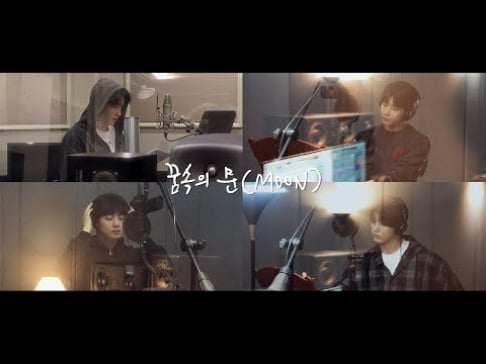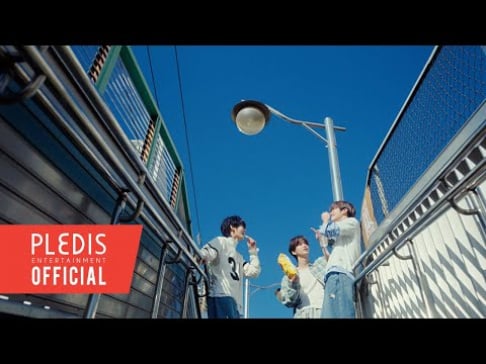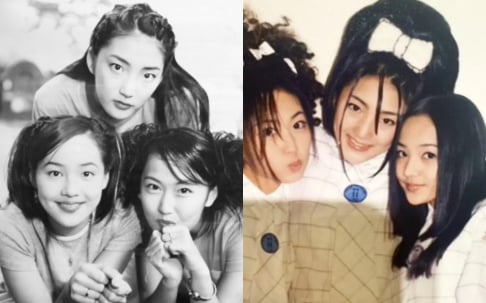![]()
I frequently mention the great idol wars of the 1990's when the first generation of idol stars were part of fan fueled rivalries pitting groups against each other. While there were many different players, at the center of the frenzy stood the two most important companies of that era: SM Entertainment and DSP Media. These two companies have had an interesting relationship over the years as SM has always been viewed almost as a big brother to DSP's little brother in the way they have developed and debuted groups. However, there is no doubt that each has helped shaped the landscape of K-pop. On today's Way Back Wednesday, we'll look at how the rivalry between the two companies began and how it's still continuing to this day with their contributions to the world of K-pop both past and present.
H.O.T. vs. Sechskies - Rise of the Boy Bands
H.O.T and Sechskies defined the SM/DSP rivalry of the late 1990's. Lee Soo Man of SM Entertainment changed K-pop forever with how he created and marketed the first boy group in H.O.T. The strategy of DSP Media (Daesung Enterprise at the time) CEO Lee Ho Young was to respond by creating what was initially viewed as a copycat group but Sechskies had their own distinct style and personality. Rival fans have always been a part of Korean music but it was the rise of the boy bands that led to a new generation of fandom with specific colored balloons (white vs. yellow) and synchronized chants (I had a friend who used have them ALL memorized). Much of this activity is still part of the fan experience today. I think the rivalry existed more in the minds of fans than between the actual groups but the popularity of the two groups probably opened the eyes for the entire music industry about how powerful the (then) new generation of music fan could be. From H.O.T and Sechskies came the basic outline of how to market an idol group: showcasing individual personalities but always as part of the larger group. It's still exactly how most companies operate today.
SES vs. Fin.K.L - Rise of the Girl Groups
Even with all of the very talented young women in K-pop today, SES and Fin.K.L are still my two favorite girl groups of all time. SES debuted in 1997 with the single "I'm Your Girl" and it was an instant hit making them stars overnight. Their cute, wholesome image worked with fans as they became the first idol girl group in K-pop. Fin.K.L debuted just a few months later but didn't have the initial success they had hoped for but that all changed with their second single "To My Boyfriend" which propelled them to become one of the most popular groups in K-pop history. Like the boys, the rivalry between the group mostly existed among fans but those fans were fiercely loyal. Both SES and Fin.K.L grew beyond their role of just idol musicians into almost iconic figures with fans copying their fashion, hairstyles, and more. They became major product endorsers and were sought after guests on TV shows. The girls were basically marketed as all-around talents rather than just singers and encouraged to show multiple sides of their personalities to forge that personal bond that fans latch onto. Sound familiar? SM and DSP still do that today.
TVXQ vs. SS501 - Going Global
SM and DSP took everything they had learned from H.O.T and Sechskies and took it to the next level by going global with the next iteration of boy groups, TVXQ and SS501. Both groups had success in Korea (TVXQ more so than SS501) but the rivalry really kicked off when the companies made the jump into the Japanese market. Traditionally, the Japanese market was not easy for Korean artists to crack but through constant effort from previous artists such as BoA and Korean cultural exports (think 'Winter Sonata'), the doors slowly began to open. By the time the two groups came along, they were able to kick the door down and paved the road to the Japanese market that many of the current idol groups enjoy today. I think it's fair to point out that while SS501 had great success, TVXQ just did it bigger and better. During their heyday, the group boasted the largest fan club in the world, were the most photographed celebrities in the world and had much broader success over a longer amount of time in both Japan and Korea. It's unfortunate how that story ended but there's no denying their impact on the world of K-pop.
Girl's Generation vs. Rainbow - The Mega Girl Group
When Girls' Generation first debuted back in 2007, the majority of the talk surrounded the fact that there were nine members and that SM was on some weird big-huge-group kick as Super Junior and their thirteen members debuted just two years before. There were questions about if that same concept could work with a girl group and if fans would be able to identify with each member which is so important in K-pop. The answer was a resounding yes. GG was the benefactor of the full marketing prowess of SM but it wasn't until their 2009 monster hit "Gee" that they became international stars. That same year, DSP introduced their seven member Rainbow which followed the trend of huge girl groups performing intricate choreography taking advantage of their sheer numbers. While individual members of the group have become popular, the group itself hasn't reached the same level of success as their rivals. This was more of a clear example of DSP following in the footsteps of SM, but it's not just DSP. Other companies like Core Contents Media and Pledis Entertainment have followed suit with groups like T-ara and After School growing to eight members each. All of that was from the success stemming from SM as they showed it was possible for these large line-ups to become popular.
EXO vs. A-JAX - The Next Evolution
In 2012, K-Pop was all about new boy bands and their powerful concepts. EXO's highly anticipated debut was the blueprint for many, incorporating apocalyptic themes in their music and big powerhouse vocals. As far as concept is concerned, A-JAX followed this formula the closest. Currently, it seems A-JAX moved on to doing their own thing with their singles "2MYX" and "Hot Game". But until EXO makes their comeback, we'll just have to wait and see how this rivalry will turn out.
This article might seem like I'm painting all SM groups as revolutionary and all DSP groups as meager followers. Not so. It is true that SM Entertainment has been on the cutting edge of the K-pop idol industry and could be called innovators. It's also true that DSP Media has been in a following position debuting groups after a similar group comes out from SM but so has the rest of the industry. What DSP was able to do though was create groups that were able to stand up to the SM groups and that challenge forced each company to produce cooler music, choreograph more creative dances, envision forward fashion, and overall, made each company, each group, and even maybe each member better. And that's why rivalries are a good thing.

 SHARE
SHARE














































Log in to comment